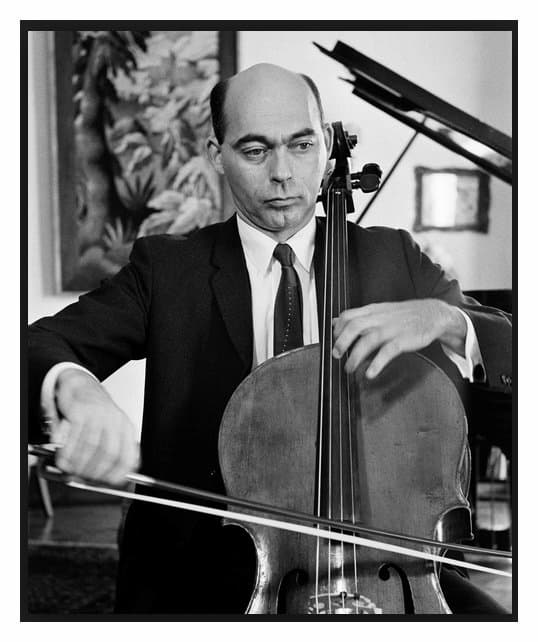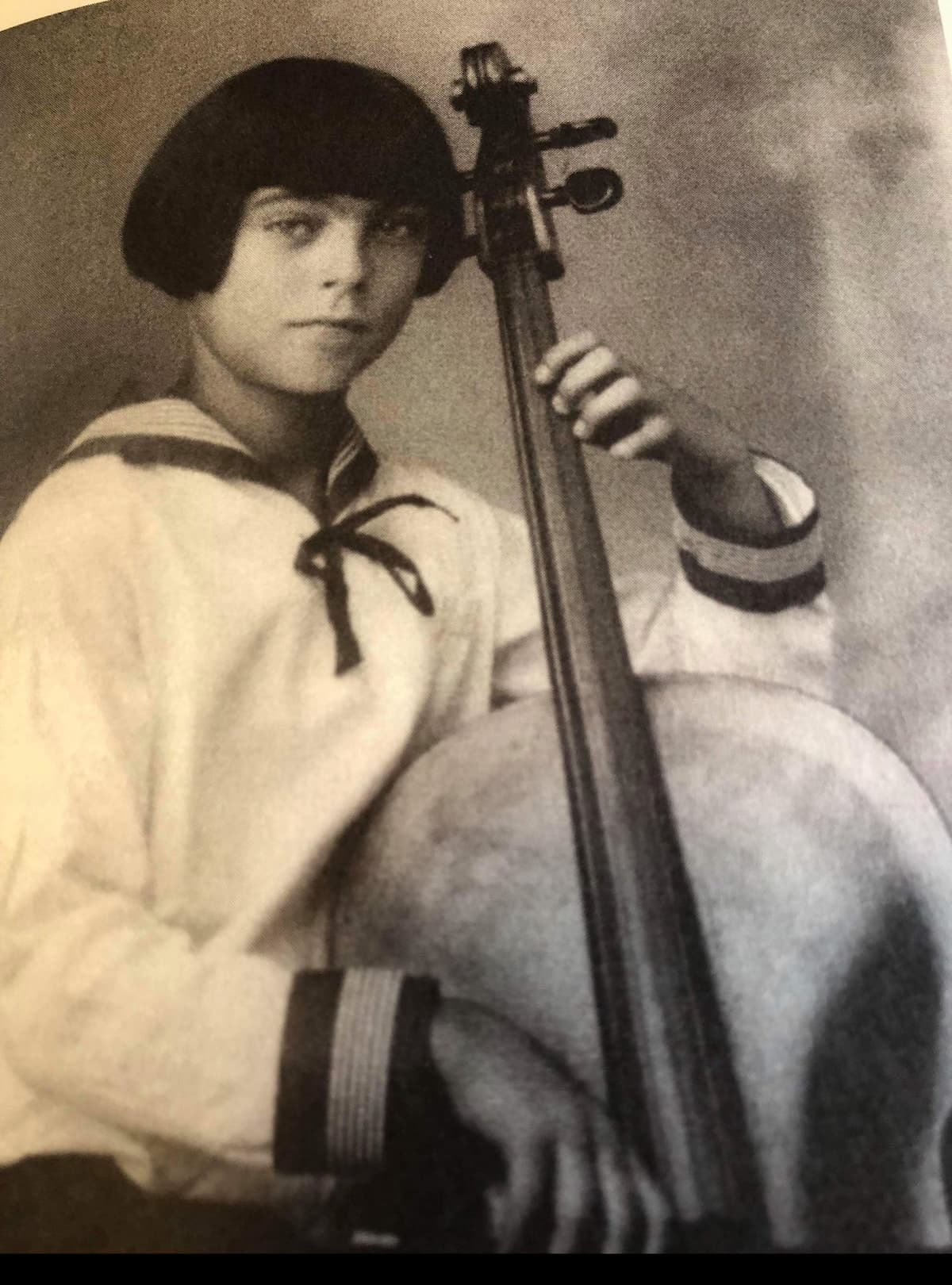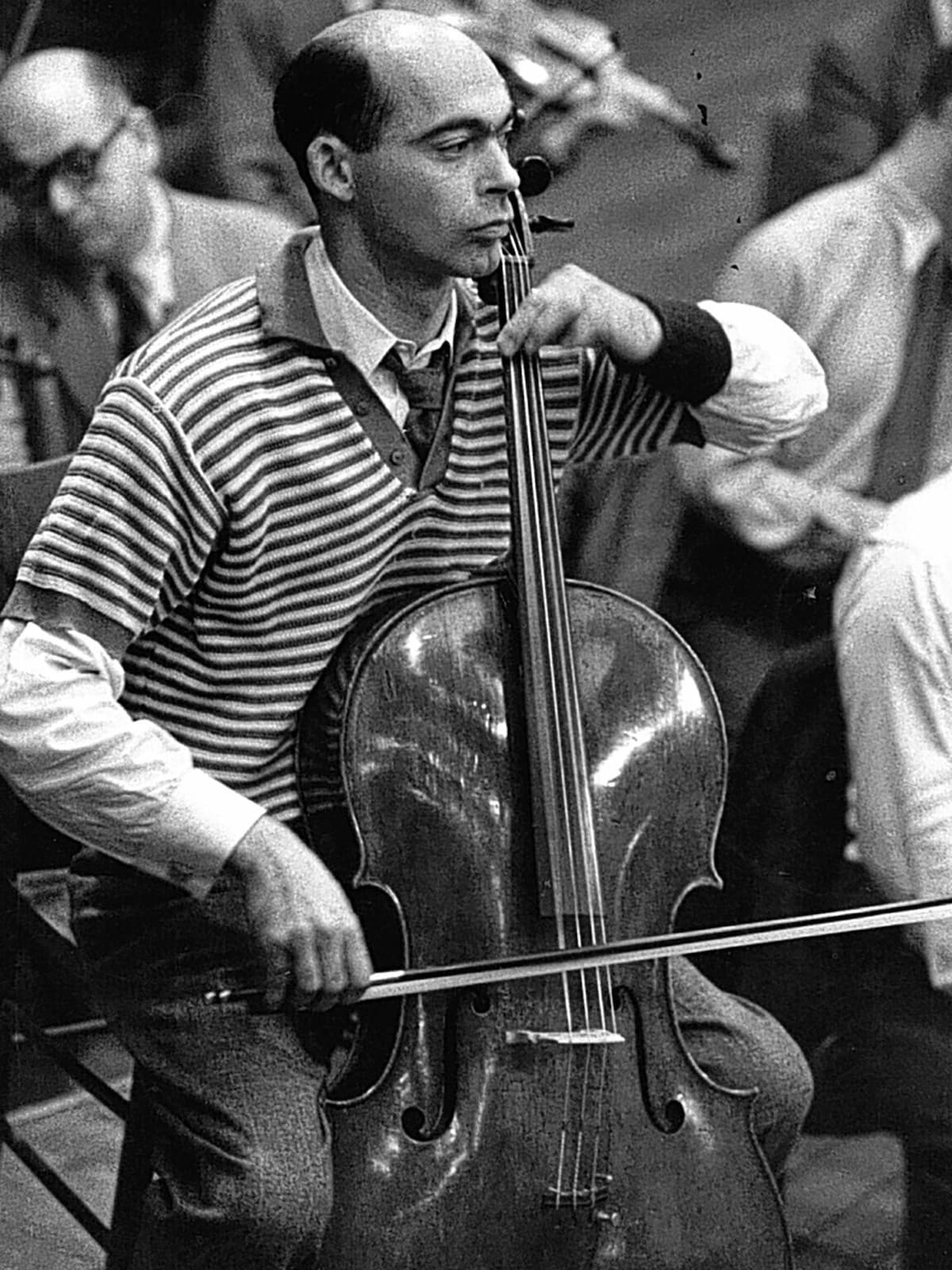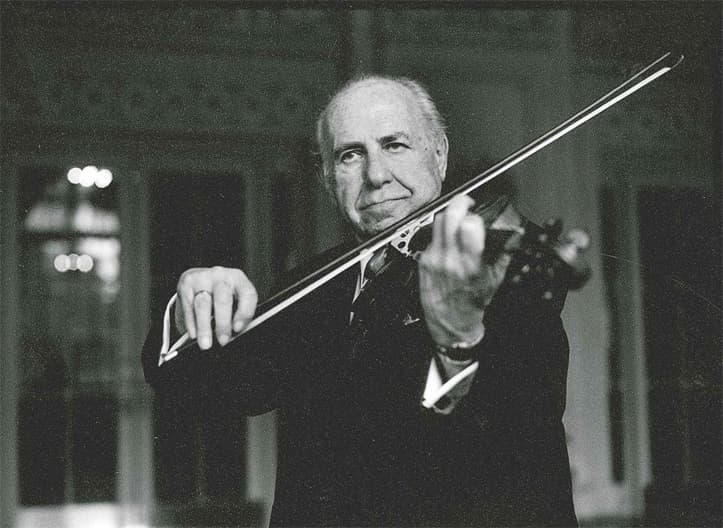The playing style of cellist János Starker was greatly admired for its “silken richness of tone and an expressive purpose governed by deep musical sensibility.” One of the greatest cellists of all time, Starker also had a great sense of humor. As he writes, “I have always been rather allergic to autobiography as a genre, so it is no wonder that at one point I indulged in writing the Autobiography of a Stomach, which dealt with data pertinent to a number of journalistic questions.” As he reports, “I was born on a hot 5 July 1924 in a hospital named Saint János.”

János Starker
His mother had desperately wanted a girl and was sorely disappointed. Undecided what to call the child, the doctor apparently suggested the name of the hospital, and his mother agreed. Starker writes, “Why should I be trapped in a János? A stomach such as I ought to be in a …what? I made sure that my presence and displeasure were well known.” As Starker reports, “It was 1928 when I first started hearing funny noises. They came from a four-stringed instrument called a fiddle…I hated those noises so much.”
Starker Performs Bach’s Cello Suite No. 3 in C Major, BWV 1009
“One day, later on, something like a fiddle was pressed against me, but this time it was much larger, and the little fellow sat on a chair holding it. I had mixed feelings. Later he pressed that thing against me again, but quite a nice tune came out of it. By then I knew it was called a cello. The people applauded and my little fellow was pronounced a child prodigy.”

The young János Starker
Starker continues, “Years passed and the tunes improved. I was impressed. The little fellow wasn’t all that bad! I began to like the whole idea. We were invited to rich home where I enjoyed some marvelous food… But then I began to worry. What if he doesn’t improve? Will my luck hold? What if he stops and gets lazy? After all, the cello does have to be practiced. So I worked out a little deal with myself. When he played well I made him feel good, so good that he forgot all the pain I created when I felt he hadn’t practiced enough. When he really didn’t play well, I doubled him over in agony. I was a bastard!”
Ernő Dohnányi: Konzertstuck, Op. 12 (János Starker, cello; Seattle Symphony Orchestra; Gerard Schwarz, cond.)

Starker was born in Budapest, the son of a tailor and a mother that had come to Hungary from Ukraine. None of his parents had a musical background, but his mother saved every penny to afford violin lessons for János’ brother. János was given his first cello at six, and he took lessons with Fritz Teller. After only six weeks he was put on stage in a children’s theatre, and he played two little tunes. Recognizing his obvious talents, János entered the preparatory stage for the Franz Liszt Academy of Music and started taking lessons with Adolf Schiffer. However, the musical event that really took hold of János’ imagination occurred in 1931. His mother took him to his first concert, with Pablo Casals playing. He remembers, “Schiffer introduced me to him, saying something about my being talented. Casals planted a kiss on my cheek, and I’m told I didn’t wash my face for a week. My fate was sealed.” Two years later he attended a recital in which Béla Bartók played with Emmanuel Feuermann. “It was a revelation. I felt sure that was how a cello should sound.”
Antonín Dvořák: Cello Concerto in B Minor, Op. 104, B. 191 (János Starker, cello; Saint Louis Symphony Orchestra; Leonard Slatkin, cond.)

Imre Waldbauer
János proudly relates that his teaching career started at the age of eight. “I was told to practice weekly with a six-year-old girl named Eva Czako, and I got paid. I became a money-earning professional, practicing two to three hours a day.” And by the age of 12, he had five students. Around that age, Starker joined the classes of Imre Waldbauer and Leo Weiner. Waldbauer was the leader of the most prominent quartet, “a man of extraordinary knowledge and musicianship. In a two-hour session, one could learn more from him than in six months of cello lessons.” Leo Weiner taught piano chamber music, and from the “1920s to the 60s all Hungarian musicians of any future consequence attended his classes. “I would name him, without fail, as the most important influence in my life.” Starker first became known in musical circles in 1936 when he performed the Locatelli Sonata in an Academy student recital. But the real breakthrough happened in 1938, when “on six hours notice, I substituted in a performance of the Dvořák Concerto; my first time playing it with an orchestra.” And in 1939, the “first performance in many years of the Kodály Solo Sonata marked me as an up-and-coming cellist.”
For more of the best in classical music, sign up for our E-Newsletter

Top musician
I was lucky to witness his performance in the Colon teatre
Am I freaking out? Is it just me or does this guy look like Jim Parsons; Sheldon of The Big Bang Theory?????????